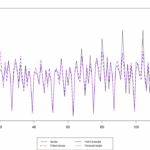Teaching statistics as a flipped classroom with the help of AI? You heard that right! That’s exactly what I tried this year – and here are the results. Attached to this post is the student evaluation score for the module. Yes, the number of responses is quite low (only 50% of the cohort), but it […]
Teaching Statistics and Descriptive Analytics in the world of AI












